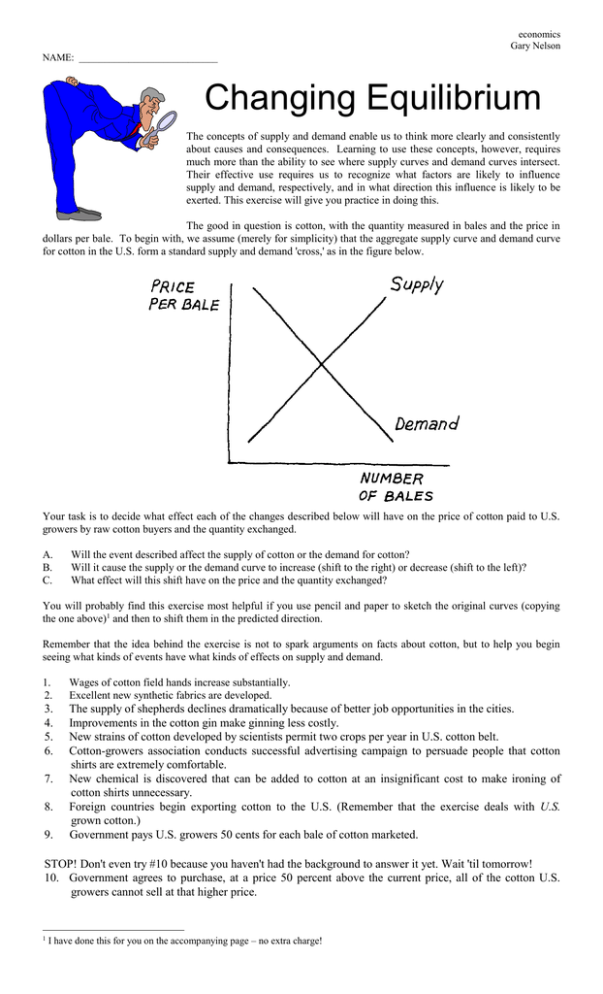Changing Equilibrium
advertisement

economics Gary Nelson NAME: ____________________________ Changing Equilibrium The concepts of supply and demand enable us to think more clearly and consistently about causes and consequences. Learning to use these concepts, however, requires much more than the ability to see where supply curves and demand curves intersect. Their effective use requires us to recognize what factors are likely to influence supply and demand, respectively, and in what direction this influence is likely to be exerted. This exercise will give you practice in doing this. The good in question is cotton, with the quantity measured in bales and the price in dollars per bale. To begin with, we assume (merely for simplicity) that the aggregate supply curve and demand curve for cotton in the U.S. form a standard supply and demand 'cross,' as in the figure below. Your task is to decide what effect each of the changes described below will have on the price of cotton paid to U.S. growers by raw cotton buyers and the quantity exchanged. A. B. C. Will the event described affect the supply of cotton or the demand for cotton? Will it cause the supply or the demand curve to increase (shift to the right) or decrease (shift to the left)? What effect will this shift have on the price and the quantity exchanged? You will probably find this exercise most helpful if you use pencil and paper to sketch the original curves (copying the one above)1 and then to shift them in the predicted direction. Remember that the idea behind the exercise is not to spark arguments on facts about cotton, but to help you begin seeing what kinds of events have what kinds of effects on supply and demand. 1. 2. Wages of cotton field hands increase substantially. Excellent new synthetic fabrics are developed. 3. 4. 5. 6. The supply of shepherds declines dramatically because of better job opportunities in the cities. Improvements in the cotton gin make ginning less costly. New strains of cotton developed by scientists permit two crops per year in U.S. cotton belt. Cotton-growers association conducts successful advertising campaign to persuade people that cotton shirts are extremely comfortable. New chemical is discovered that can be added to cotton at an insignificant cost to make ironing of cotton shirts unnecessary. Foreign countries begin exporting cotton to the U.S. (Remember that the exercise deals with U.S. grown cotton.) Government pays U.S. growers 50 cents for each bale of cotton marketed. 7. 8. 9. STOP! Don't even try #10 because you haven't had the background to answer it yet. Wait 'til tomorrow! 10. Government agrees to purchase, at a price 50 percent above the current price, all of the cotton U.S. growers cannot sell at that higher price. 1 I have done this for you on the accompanying page – no extra charge!


